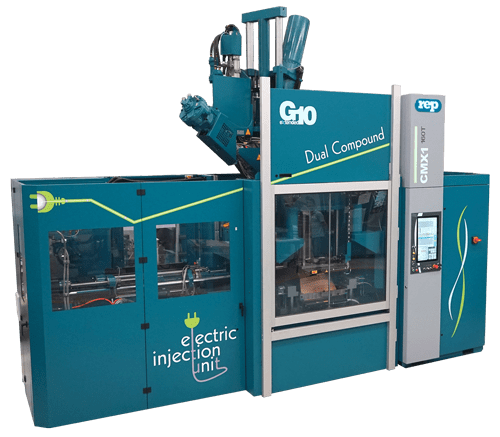Custom-Built Presses
Dual-compound injection

Special Presses
The dual-compound machine or multiinjection press
Equipping an injection molding machine with a second injection unit has become customary to REP on all types of machines in all configurations:
- injection from the top
- or the bottom,
- the back
- or the side.
The user's objective is to produce parts integrating several compounds of various characteristics. The goal consists in combining technical performances at optimized costs:
- elimination of assembly operations
- integration of a low-cost compound into a part, thus limiting the quantity of noble compound to the functional part only
The dual-compound injection principle can be adapted to all injection presses, regardless of the size of the closing units and of the injection units.
The production of dual-compound parts may be performed using:
- Two sequential injections into two complementary cavities,
- Simultaneous injection into two different cavities or in two separate part cavities,
- Simultaneous (or offset) injection into one single cavity.
It is either possible to directly inject into the mold or through a special cold runner block (CRB) integrating several compound circuits.
Let's have a look at the dual-compound CMX: That's productivity, versatility and flexibility!
The dual-compound multistation machine (CMS in G9 and CMX in G10) is an injection press with 4 rotating stations and 2 injection units.
It allows for the synchronous curing, stripping, and injection of 2 compounds in the same mold.
Productivity
Much higher hourly production: gain in productivity of 50 to 100% compared to a single-station press of 400 tons.
Quick mould change (10 minutes for 4 moulds).
Flexibility
Possibility to disable a mold.
Ability to program different shot sizes.
Versatility
Adaptation of the stripping station to various kinematics.
The dual-compound multistation press is not only dedicated to dual-compound injection: users can switch from simultaneous injection to sequential injection, or only use an injection unit if required !





